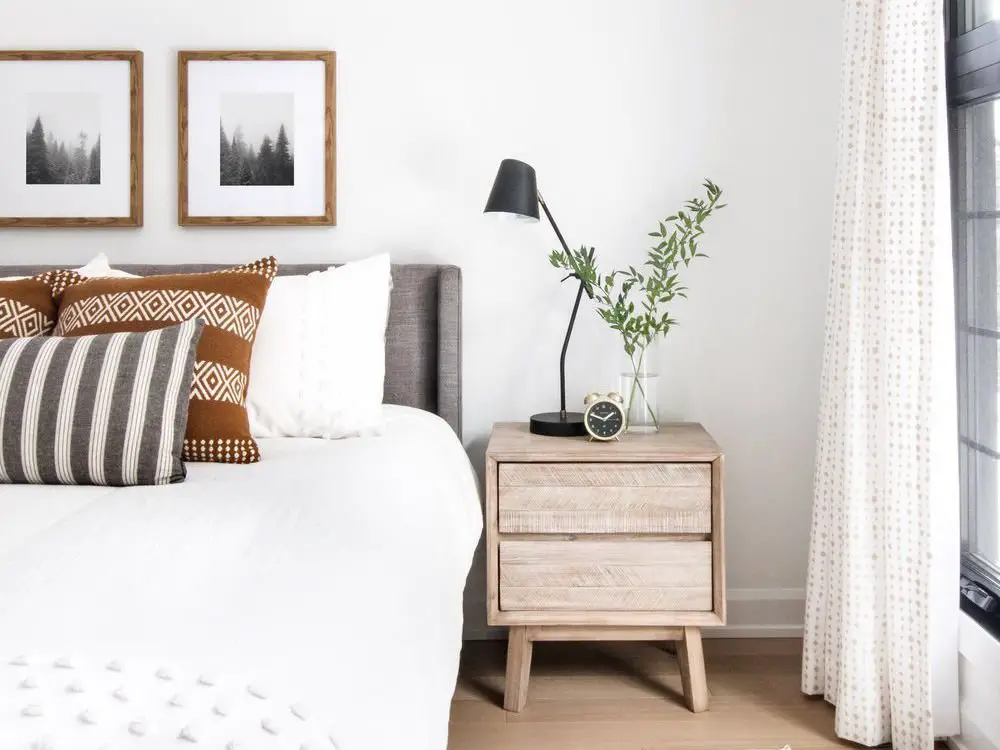The environment of your bedroom impacts your capacity to get a good night’s sleep. You’re more likely to fall asleep quickly if you’re calm and content. The colours in your bedroom, in particular, can make the difference between a restful night’s sleep and a restless night’s sleep.
Experts in colour psychology discovered that some hues make us feel relaxed, while others feel alert. We discuss the best and worst colours for sleeping in our article so that you can better understand how colour influences the circadian cycle.

Colours for a Sleepful Bedroom
Blue, yellow, green, silver, orange, and pink are the greatest colours for sleeping. These hues are calming and relaxing to the neurological system. For a pleasant, friendly ambience, adhere to neutral or pastel colours.
Blue
Blue is a great bedroom colour because it evokes feelings of tranquilly and relaxation. Because of unique receptors called ganglion cells found in the retinas, the brain perceives blue better than any other colour.
Ganglion cells absorb information from the visual environment and convert it into chemical signals sent to the hypothalamus, a portion of the brain that produces hormones like melatonin and cortisol. Melatonin is a sleep hormone that affects the sleep-wake cycle, while cortisol is a stress hormone that helps you stay awake during the day.
Because blue is a non-stimulating colour, it causes the hypothalamus to create more melatonin and less cortisol when you see it. A crimson room, on the other hand, stimulates the brain and increases cortisol production, resulting in poor sleep quality.
Yellow
Softer yellow colours provide a pleasant ambience since the muted tone mimics sunlight. Soft yellows relieve stress and promote relaxation, allowing you to get a good night’s sleep. Brighter colours are stimulating and should be avoided.
Green
Green is also a good hue to choose when you want to unwind. Green is also a simple hue for the eyes to see since, like blue light, it is sensitive to green light. Because green is a non-stimulating colour, it makes us feel tranquil, similar to a blue room. The ideal green hues for sleeping should contain blue tones; warm tones, such as yellow, may make you feel energised rather than help you relax.
Silver
If you favour neutral hues, silver is a terrific option. Silver, unlike dark grey tones, is calming. Choose a matte silver hue rather than a shiny one, as the sheen will reflect any bright light and keep you awake.
Orange
Light orange colours, such as tan and beige, provide a warm tone that evokes a sandy beach, making your bedroom feel pleasant. Choose oranges with brown undertones, such as terracotta, rather than bright oranges, stimulating the brain.
Pink
Because of its crimson tones, pink may not appear to be a nice colour for the bedroom, but a gentle, natural pink gives off a relaxing vibe. Reds that are too brilliant should be avoided.
Warm light is better for sleeping because the longer wavelengths of warm light are less irritating to the eyes. Yellow or red-hued light bulbs are ideal for bedroom lamps. Blue light, on the other hand, is the worst for getting a good night’s rest. Because your eyes are more sensitive to blue light, blue light from LED light bulbs and electronic gadgets interrupt melatonin production.










